American supersonic fighter escort F-108A "Rapier"
Originally Rapier was designed according to the scheme duck with a delta wing. It was assumed that in the middle of the trailing edge of the wing two additional keels would be installed, providing stability at speeds above M = 2. Air intakes - with a vertical wedge, adjustable.
At the stage of the layout of the design of the F-108 changed. The front stabilizers, as well as the upper parts of the keels installed on the wing have been removed. Air intakes performed "bucket". The triangular wing took the form of a double delta. The sweep angle on the leading edge in the root part was 65 degrees, on consoles - 45. Probably, the end portions of the wing were deflected downwards, as on the XB-70.
Initially, XF-108, as well as XB-70, was supposed to be equipped with J95-GE-5 engines, which used borohydrogen fuel (pentabor). Compared to kerosene, this fuel had a higher “calorie content”. However, as it turned out, this increased the range only by 10 percent, with extreme toxicity of the fuel. In August 1959, the development of the J95-GE-5 engine and boro-hydrogen fuel was closed.
According to calculations, the maximum speed at an altitude of 23 km should have been 3170 km / h, and the range of 1630 km. For the pilot and the radio operator, individual ejection capsules were provided.
A distinctive feature of this aircraft was an extremely complex fire control system which was based on the pulse-Doppler radar ASG-18, capable of highlighting targets in the lower hemisphere. The AN / ASG-18 high power locator was supposed to detect targets at a distance of 160 km. To test the system based on the Convair B-58 Hustler a flying laboratory was created.
The “main caliber” of the F-108 Rapier was the GAR-9 “Super Falcon” air-to-air missiles with a long range. The range of the 365-kilogram Hughes missile was 176 km. Three Hughes GAR-9 "Falcon" were to be placed in the weapons bay. A rocket speed equal to M = 6 should have been provided by Lockheed's fluid engine. For guidance, a combined homing head was used - semi-active radar at the medium flight distance, infrared at the final one.
An inspection of the F-108A mockup was conducted in January 1959, and the first flight was planned for March 1961.
However, by the middle of 1959, the Air Force had already begun to have doubts about the need for a new interceptor program, which required substantial funds. The main threat now were ballistic intercontinental missiles of the USSR, and against which “Rapier” was completely useless. In addition, the air force concluded that American ballistic missiles may well replace the Valkyrie B-70 bomber - the F-108 escort fighter. Accordingly, the 23.09.1959 contract on “Rapier” was canceled, and the HB-70 project was cut down to the production of one prototype aircraft.
But despite this, the work on the F-108 was not wasted: the armament control system with the AN / ASG-18 locator and the GAR-9 “Falcon” missile was used in the Lockhid YF-12A interceptor project.
Performance characteristics:
The length of the aircraft - 27,2 m (excluding PVD boom);
The height of the aircraft - 6,74 m;
Wingspan - 17,5 m;
Wing area - 173,5 m2;
Empty weight - 23090 kg;
Maximum take-off weight - 46270 (46510) kg;
Combat weight - 34530 kg;
Power point:
The number of engines - 2;
Engine - turbojet - J95-GE-5 (3);
Engine thrust - 13620 kgf (133,5 kN);
Flight characteristics (calculated):
maximum flight speed - 3186 km / h (M = 3);
rate of climb - 5486 m / min;
practical ceiling - 20400 m;
Range of flight:
radius of action - 1641 km (1020 / 1150 miles);
distillation - 4000 km (2485 miles);
Armament:
Air-to-air guided missiles - 3x GAR-9 "Super Falcon";
Guns - mm 4x20
Bomb load - up to 1800 kg;
NUR - 108x70 mm;
Crew - 2 person.
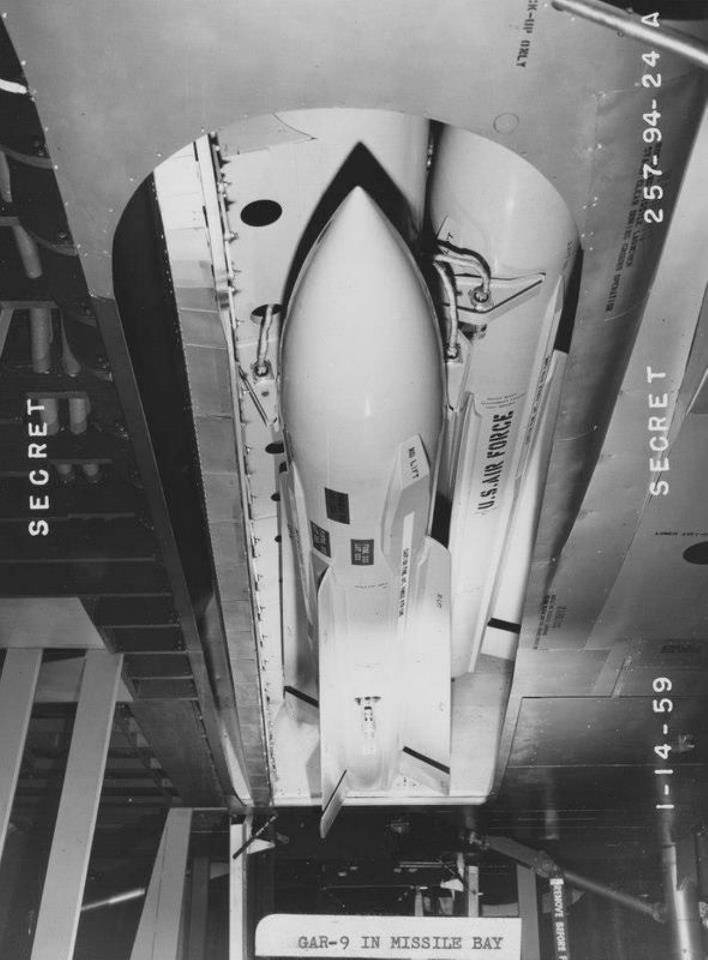
Based on materials:
http://afirsov.livejournal.com
http://www.testpilot.ru
http://www.dogswar.ru
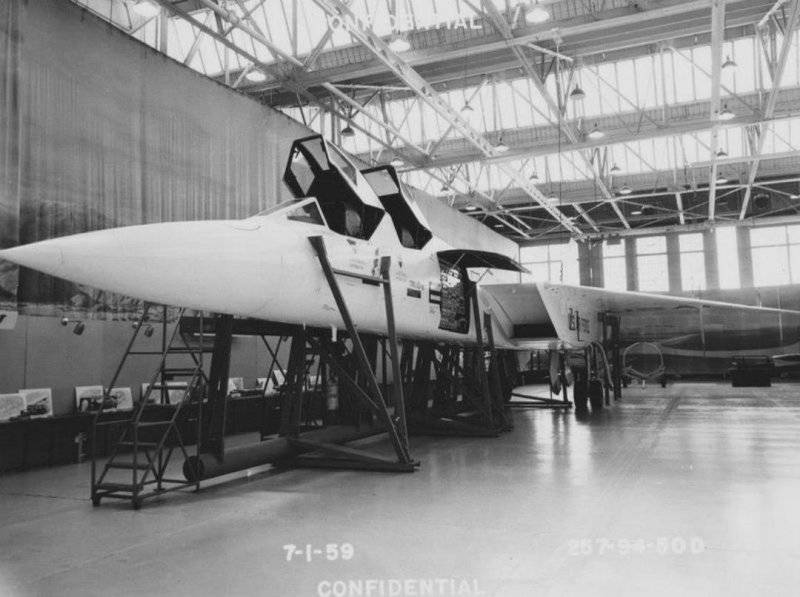
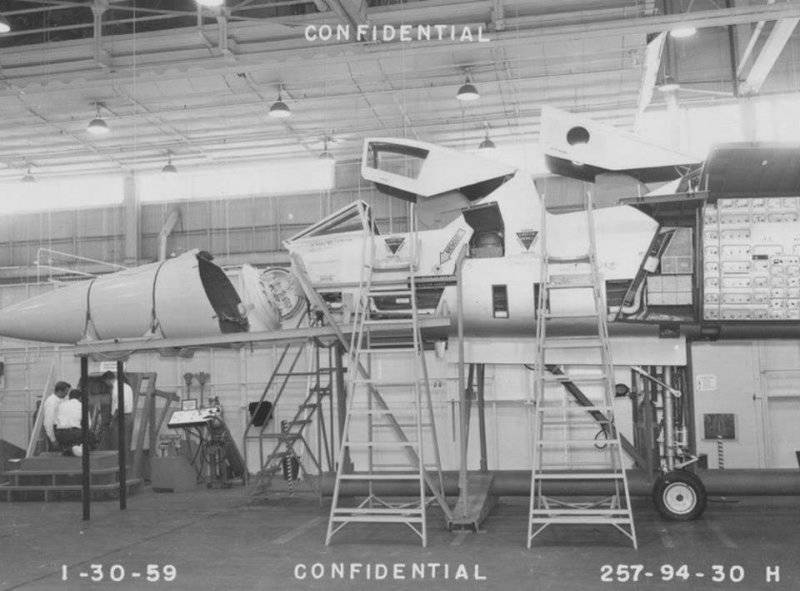
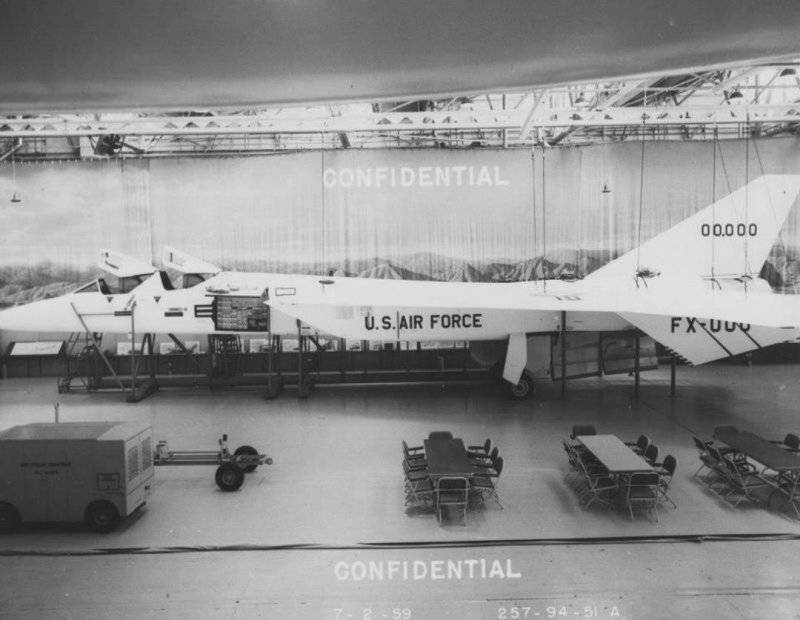
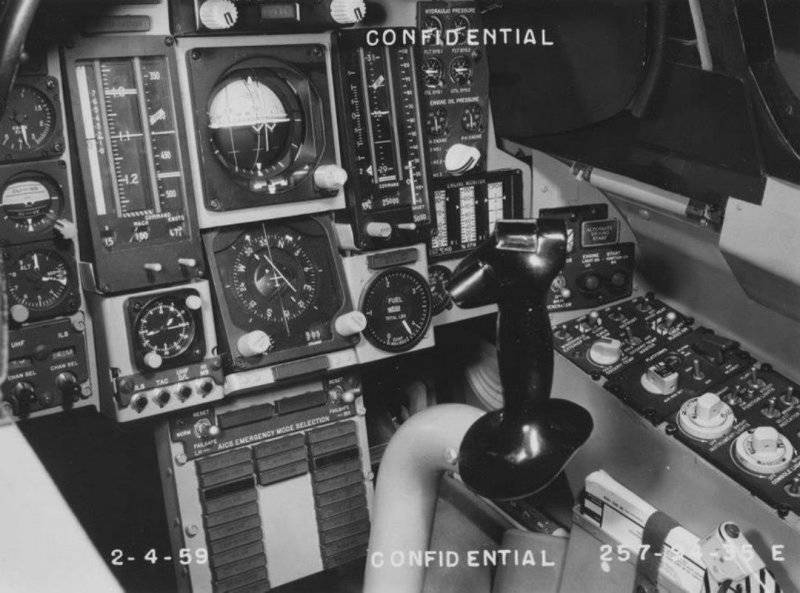
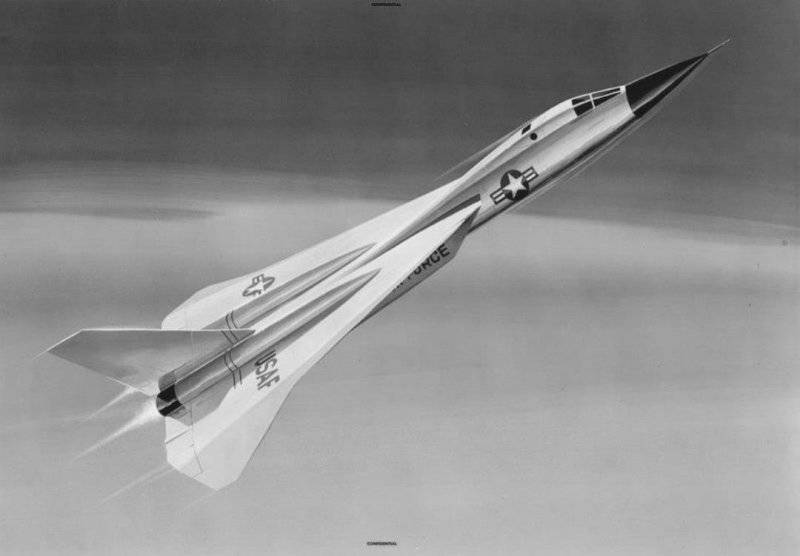
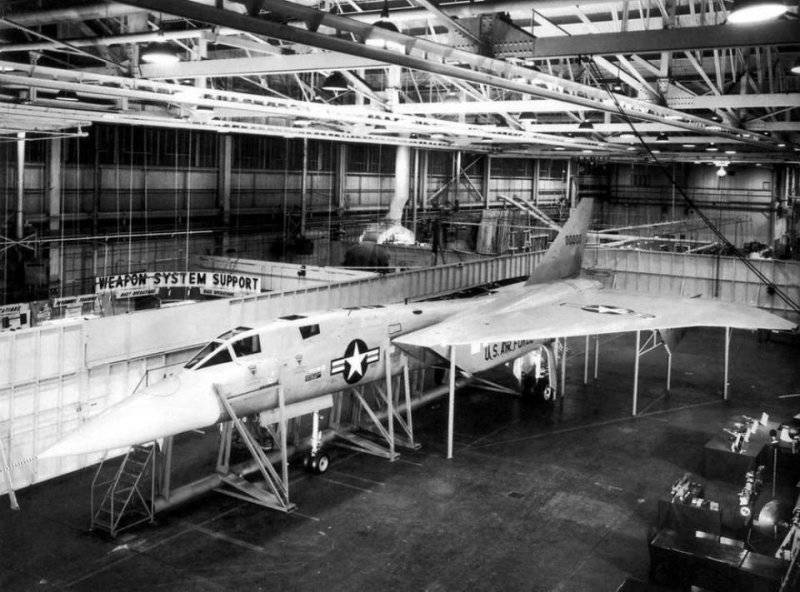
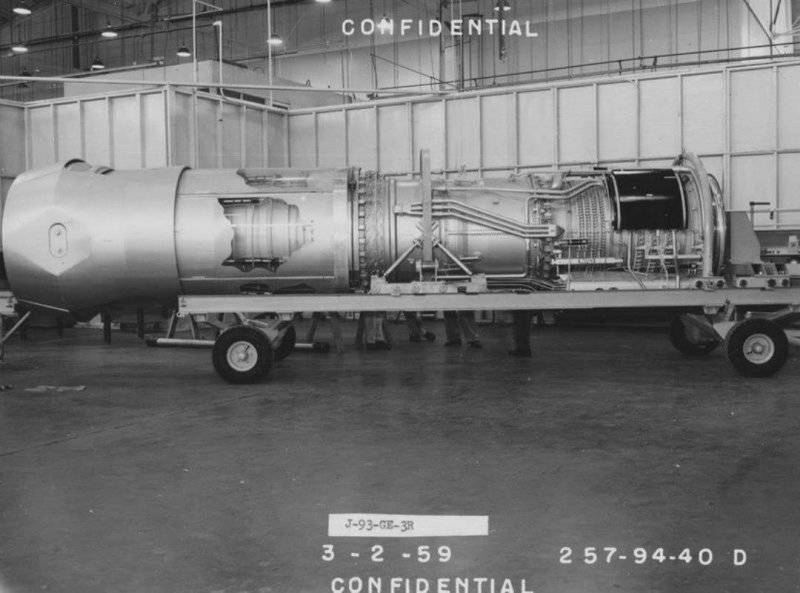
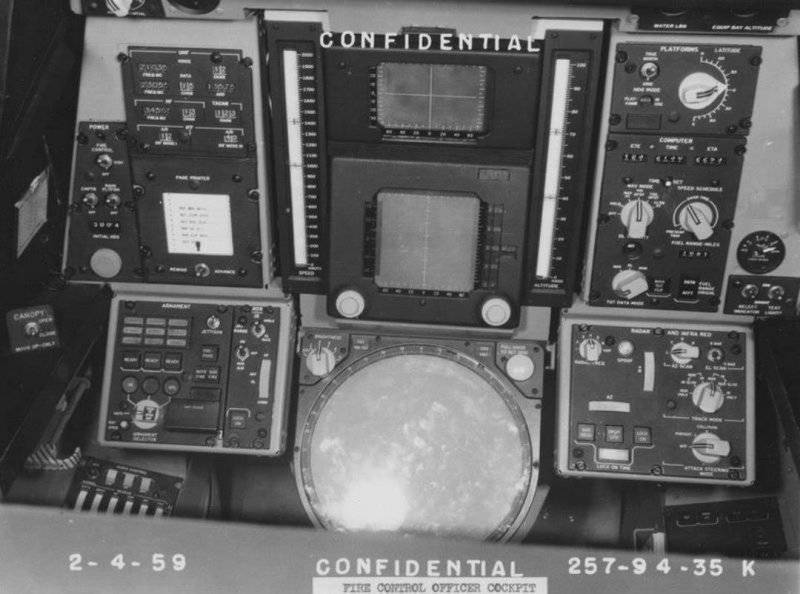
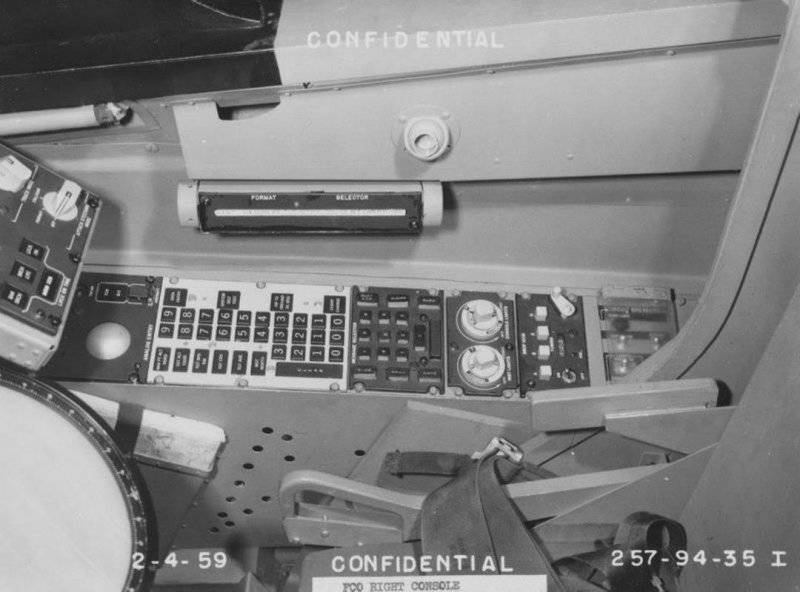
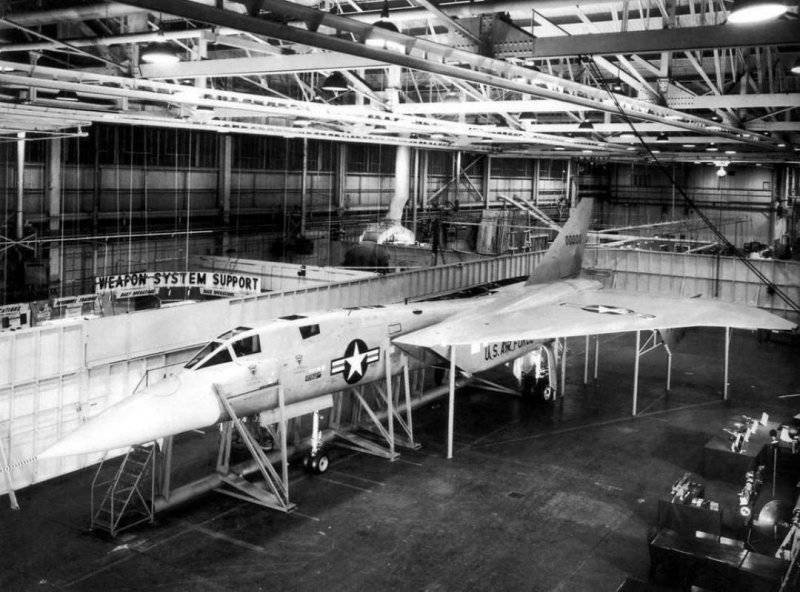
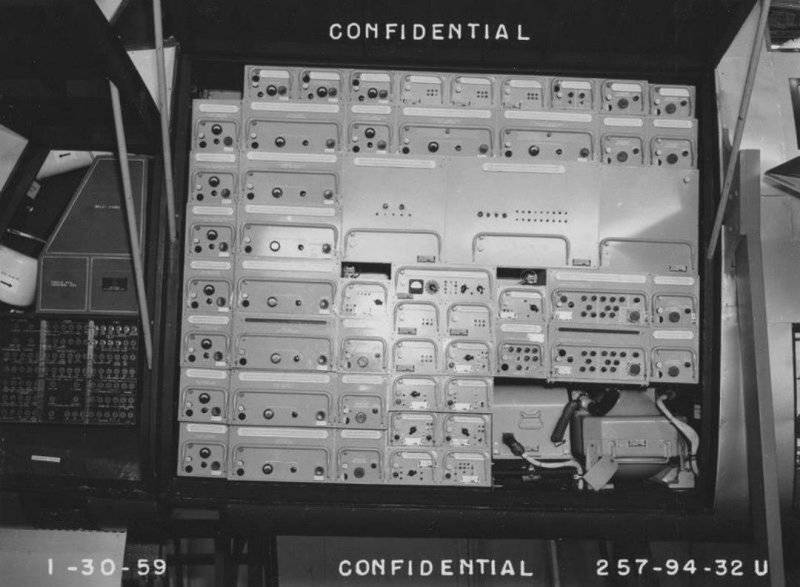
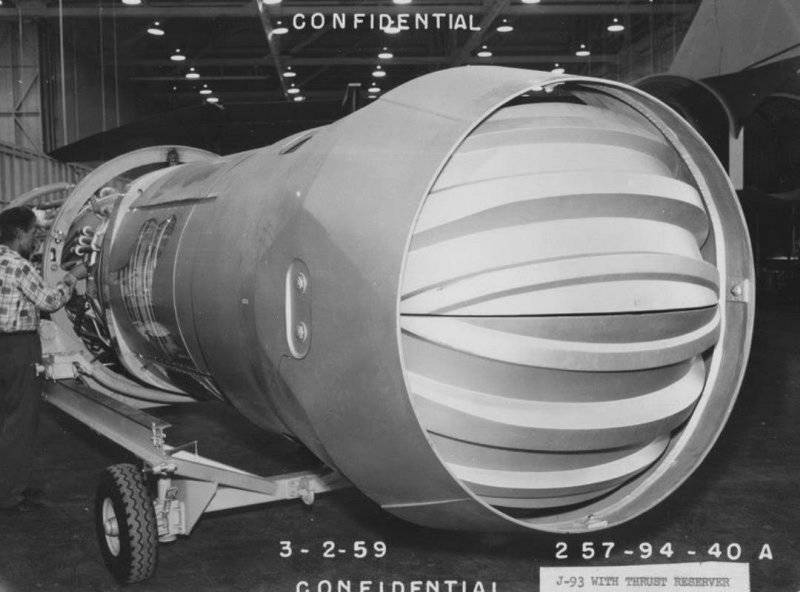
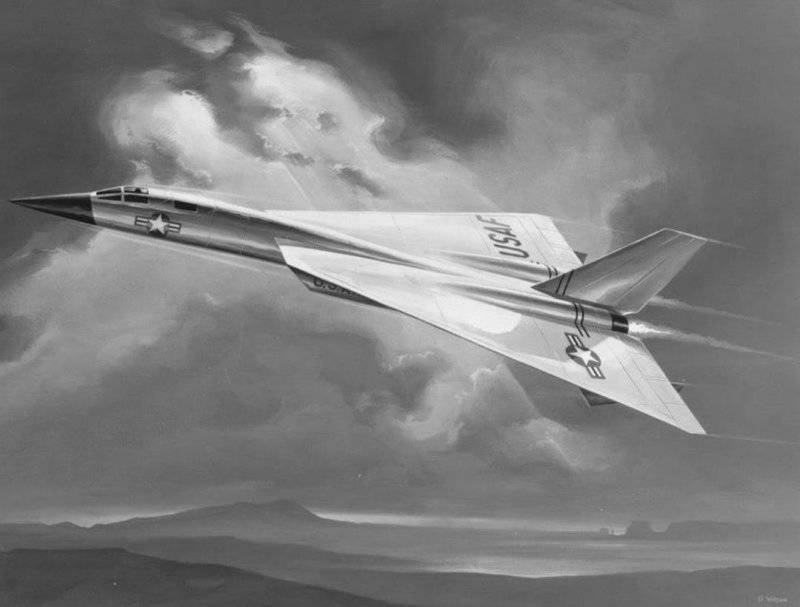
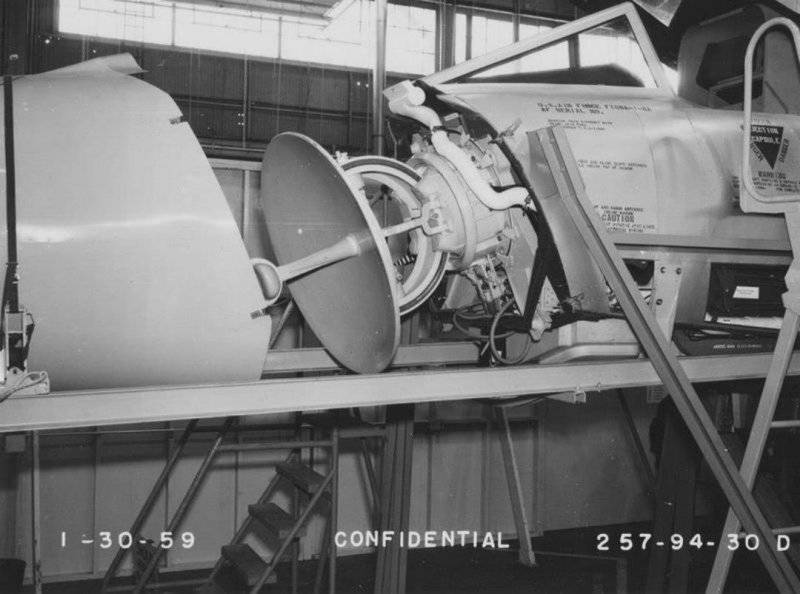
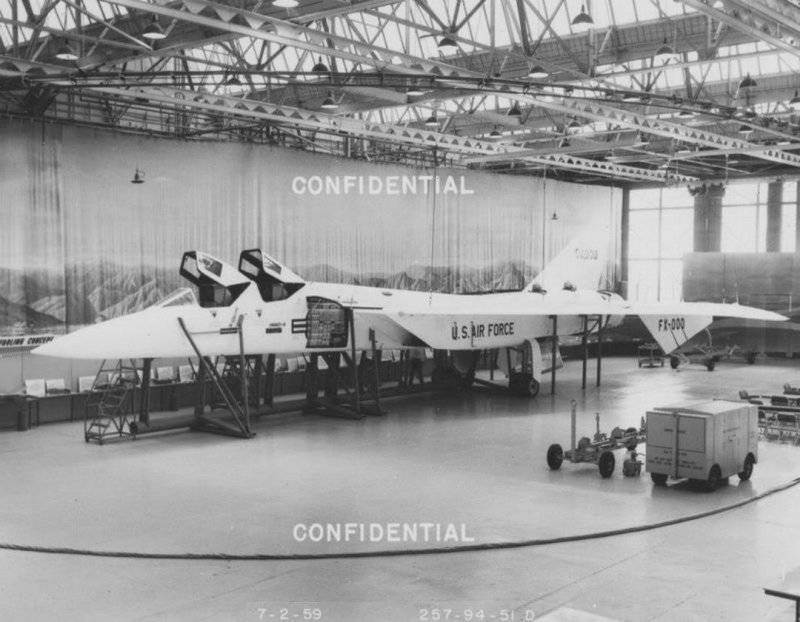
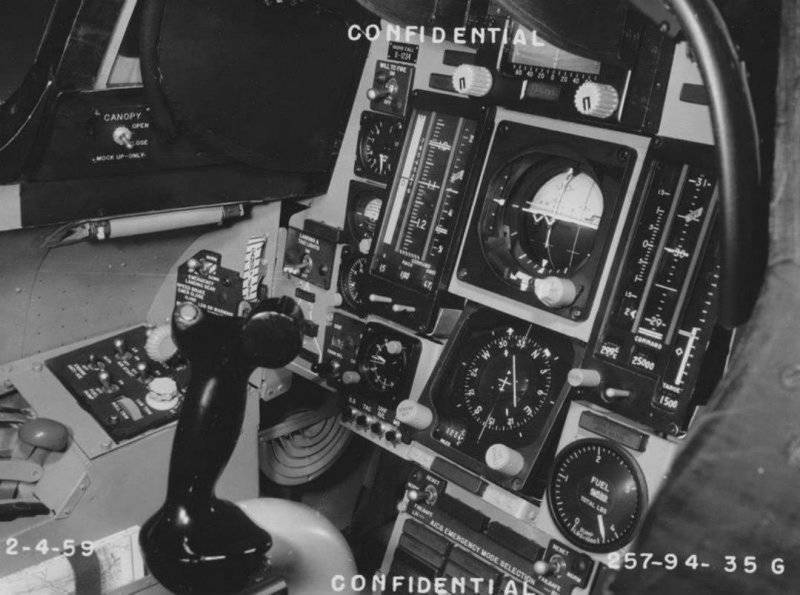
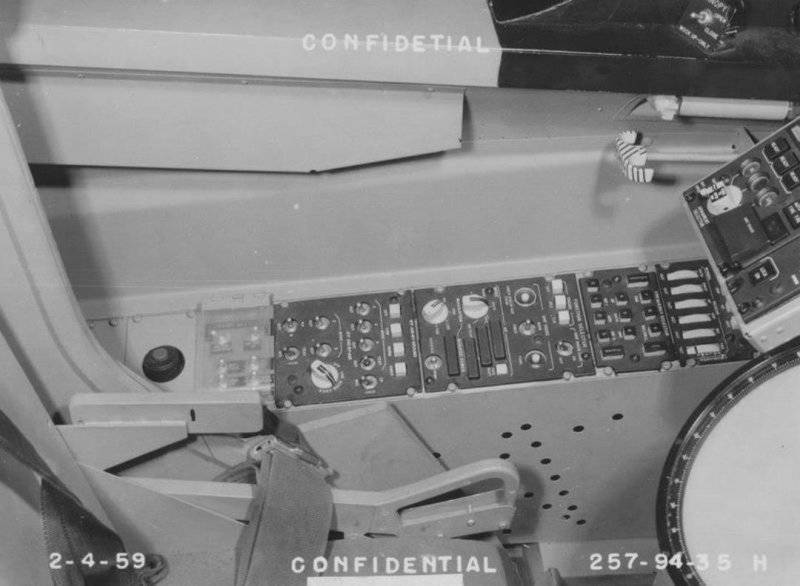
Information